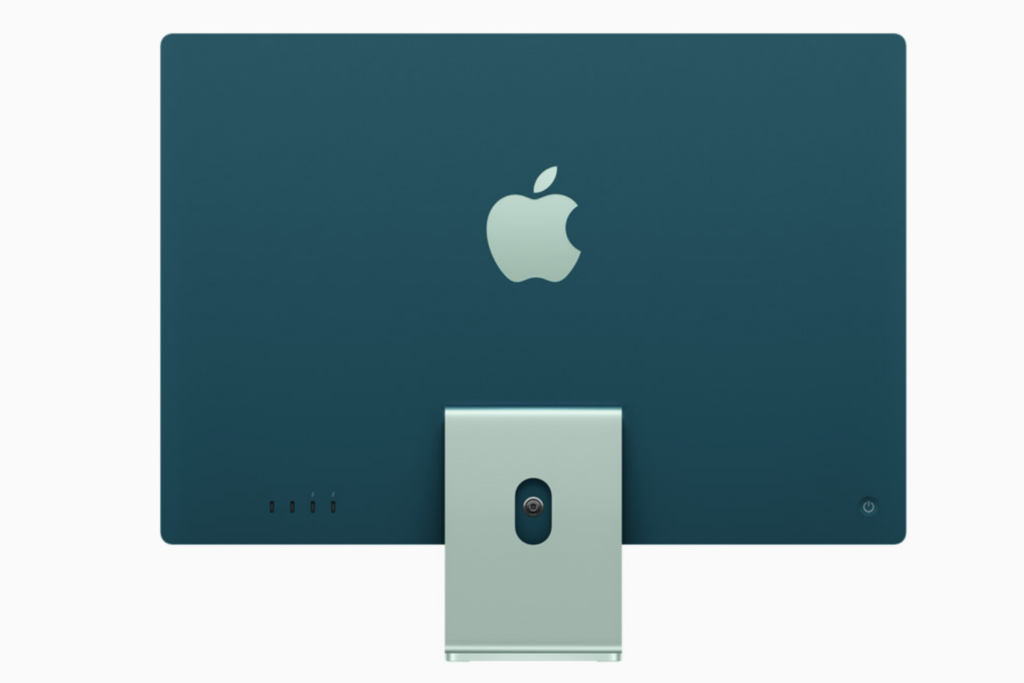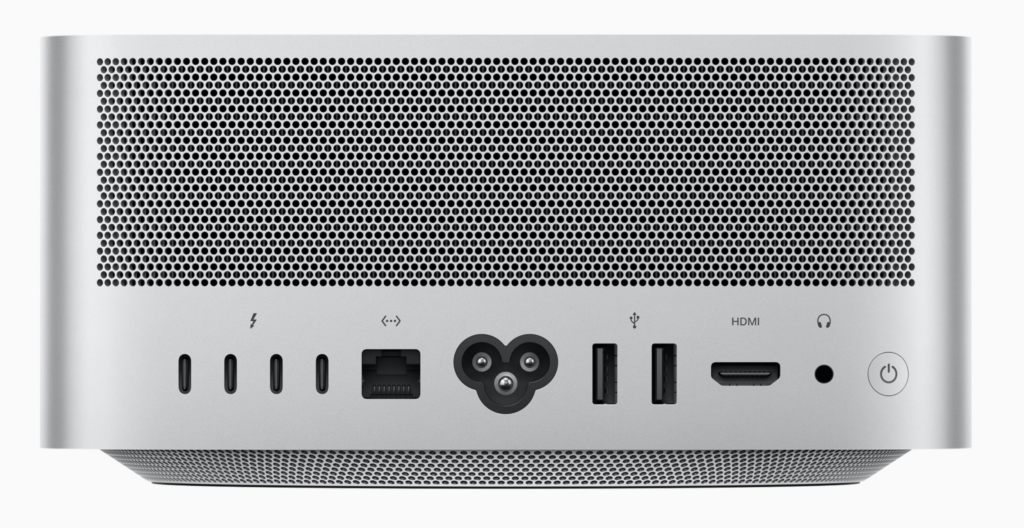The new 24-inch iMac is great computer, but it’s not without limitations and issues, including an unpleasant surprise for musicians with Thunderbolt interfaces.
I had recently had the opportunity to spend the weekend with Apple’s new (relatively) 24-inch iMac. I begged the loan as I was curious to see if its positive attributes were compelling enough to warrant upgrading to one from my current 2015 iMac.
Note that my conclusions are largely based on my personal needs. You mileage will vary.
More than enough performance, less electricity
The iMac was quick. Noticeably quicker than my current 32GB/i7-6700 iMac with both NVMe and SATA SSDs inside. Not light years, but it was palpable and addictive. CPU usage was lower during most tasks, especially ARM-optimized apps, and the graphic interface was virtually lag-free. Sweet.
I will say that I expected a bit less fan noise, but that’s likely me conflating the iMac with what I’ve heard about the 13-inch, fan-less M1 Macbook Air. Over the weekend, the fans rarely kicked into high gear, the exception being when transcoding movies. Indeed the overall experience is a quieter one than my 27-inch, though not by miles.
Alas, it wouldn’t be Apple without an infuriating gotcha. Despite an announcement day presentation raving about the two fans cooling the 24-inch iMacs, the entry-level, $1299 model has only one, with only the $1499 model I tested sporting two. Why should you care? A single fan won’t cool as well and the CPU/GPU will be throttled sooner under heavy workloads. I.e., it won’t be as fast under under said heavy load. I obviously didn’t have the opportunity to put this to the test, but others have attested to the fact.
I was impressed with the lower power draw of the 24-inch iMac. The whole deal pulled 45 to perhaps 60 watts maximum under normal loads compared to anywhere from 70 watts to 150 watts for my Intel iMac under normal load. That’s a huge difference, and being greener appeals to me.
More than enough display
I wasn’t sure how the viewing experience offered by the smaller 24-inch (23.5-inches diagonally really) iMac would stack up to my current 27-inch. Quite well actually. I certainly liked the way it took up less room on my desk. I had to scoot it a bit closer, but otherwise, it provided the same super silky, well-defined retina (high DPI/218 ppi) experience as the larger display.
Very much appreciated as well, is that the 24-incher weighs considerably less, making it far easier to set up and move around. I do move my computer about quite a bit when accessing cables, cords, peripherals, changing angles, etc. It’s just easier than trying to plug stuff in by feel.
Base solely on performance, display quality, and physical profile, I’d be completely on board with the 24-inch iMac. However, other factors soon came into play.
Software compatible–mostly
I should first mention that Rosetta 2 is amazing. That Intel-based apps perform at all, let alone this fast on an ARM-based processor is a major accomplishment. Apple Silicon’s ability to switch into Intel-addressing mode helps a lot.
For the most part, Intel/ARM compatibility issues didn’t bite me. I did have an episode of my audio interface disappearing, but this may have had something to do with my actions (it showed up in the System Report, but not at the driver level). I would’ve had to completely reset the computer to make sure, but that wasn’t an option, it being a loaner. It was there, then it wasn’t, I’ll take the blame.

Because I still review Windows software, I installed Windows 11 in Parallels Desktop. Nearly all the Intel-software I tried ran without issues. The performance, while you won’t want to work with video or music in real time, was quite acceptable.
As to that “nearly”. A couple of backup programs gagged in the virtual machine and some older utilities threw errors. I’ll need to keep an Intel-based machine around for a while.
The success and superb speed of all the native Mac productivity software I use (Office, Ninox, iMovie, etc.) was no surprise. But the real test for me was if and how well my music software would run, much of it not having been translated for ARM yet.
The good news is that all the music software that ran, ran very well. Ableton Live, Bitwig, Tracktion Waveform, Logic all proved nimble as all get out. The bad news is that one or two programs that I regularly use weren’t happy campers, even though they’d been updated for Apple silicon. It’s the obscure stuff that tends to choke.
If the issues were Rosetta/M1-related, I can’t say for sure, but the same software on my Intel iMac runs just fine, so you be the judge.
I could live without those programs, but there was another related issue which can’t be readily solved with a 24-inch iMac, and that’s…
Not enough memory
It took loading only a single large orchestral library into the Native Instruments Kontakt sample player to convince me that the 8GB of memory in the loaner was not going to cut it for me. Kontakt immediately told me that I should purge unused samples–not a good sign.
I regularly run use multiple memory-hungry libraries when playing classical music scores or composing. This is real-time stuff and swapping stuff in from storage won’t cut it. 16GB would obviously stave off the purge message, but for how long?
Why Apple doesn’t offer 32GB, or 64GB options, I’m not sure. The lack thereof won’t bother most users, but it does limit the viability of the current M1 iMac and Mini for composers and the like.
My next gripe is something will likely affect more users…
Not enough ports
A large part of the appeal of an all-in-one such as the iMac is eliminating desktop clutter. The entry-level 24-inch iMac has two Type-C Thunderbolt 4 ports, and the $1499 version adds two Type-C USB ports. Four lousy ports max and none of the still very common Type-A variety. That may be enough for some users (the mouse and keyboard are wireless after all), but for me it’s a real limitation.

I have a lot of peripherals that use those old-school Type-A USB ports so it was straight to a dock for me. Yet another peripheral invading my workspace. And because most Thunderbolt and USB docks require power, there’s also another power cable and brick to hide.
This isn’t the end of the world, but Apple being so parsimonious with the USB ports is kind of a puzzler.
Why Lightning?
I figure Apple must have a ton of Lightning connectors in a warehouse somewhere and is determined not to waste a one of them. With a world trying to standardize on Type-C (see Europe versus Apple), putting Lightning connectors on the iMac’s mouse and keyboard is, to put it mildly–lame. Sure Apple includes a Type-C to Lighting cable. Big whoop. Retire them Apple. Just like you did prematurely with Type-A on this machine.

Not only is the connector outmoded, it’s on the bottom of the mouse so you can’t charge and use the mouse at the same time as you can the keyboard. It’s a form-over-function design that forces you to keep a second mouse on hand in case you forget to charge the first one. There’s a quick charge that will get you going pretty quick, but still.
I actually use an older hard-wired Apple keyboard with the full keypad (I redefine the keypad keys for use in some programs) and a more ergonomic wireless mouse whose dongle resides in the extension USB port on said keyboard.
Yes, I like wires when it comes to this type of thing, and that includes network communications. The lag in the iMac recognizing the wireless types it ships with at boot time cemented this prejudice. But my bias also brings me to the real 24-inch iMac head-scratcher.
RF/Thunderbolt audio issue
I was extremely annoyed to hear modem-like digital noise emanating from my Yamaha HS5 powered studio monitors when I plugged my Thunderbolt audio interfaces (Clarett 4Pre, Apollo Twin X) into the 24-inch iMac. This is the kind of background noise you generally hear only when cheap motherboard RF messes with internal sound chips.
My apartment is poorly wired, but all my stuff is on the back end of an isolation transformer, doesn’t otherwise suffer this type of issue, and this is not the buzz you normally get with a ground loop. It definitely has me questioning Apple’s decision to run Ethernet signals through the iMac’s power brick and cable, even if it is my environment that’s the ultimate cause.

What’s that got to do with it? Unplugging the Ethernet from the power brick made the noise go away. Wi-Fi didn’t cause any noise, and there was no noise from the internal speakers or headphone with the power brick Ethernet connected. The noise was exclusive to Thunderbolt audio interfaces.
If the Ethernet is inducing RF into the power circuits (my theory), it’s more likely to show up in the Thunderbolt bus than elsewhere because of the hefty amount of juice it carries. If this is indeed the case, that’s a real bummer for anyone with a Thunderbolt audio interface.
I solved the issue with 2.5Gbps USB Ethernet adapter. This eliminated the noise, but having to use an adapter when there’s integrated Ethernet is irritating. Then again, the faster speed was nice, begging the question, why doesn’t Apple offer 2.5Gbps in the 24-inch iMac?
This issue isn’t exactly a deal-breaker, as there are workarounds, but it greatly diminished my enthusiasm. I’ve asked Apple about the issue, but if they’re as responsive to me as they usually are, don’t hold your breath. I’ll of course amend this article if and when I receive a reply.
I’m guessing the M1 Mac Mini or the new Studio with their normal, discrete Ethernet connections won’t suffer this noise issue. As I said, I’m supposing it’s the Ethernet/power proximity that’s the issue.
Mac Studio instead?
The new Mac Studio addresses nearly all of my hardware concerns, and is considerably more powerful than the iMac. It has more performance cores, faster storage, more memory, 10Gbps multigig Ethernet, and far more ports. However, once you factor in any sort of high-DPI display, you’re talking $2700 (24-inch Ultrafine) minimum to almost $4000 (Apple Studio Display). That’s a lot for retail therapy. Which is what I call it, as my existing rig is still perfectly capable of doing what I need it to do.

I’m also considering simply sticking with Intel iMacs and upgrading to a 2019 Core i9. 2020 is out of the question as the internal storage is not upgradeable. The obvious downside to this is that Apple/macOS will undoubtedly stop supporting Intel Macs in a few years.
I’ve also considered revamping my current iMac into a display for use with the Studio. There are controllers for this available from AliExpress, but that’s a bit of a project.
Close but no cigar Apple
At one point, before my weekend iMac getaway, I almost pulled the trigger on a 24-inch iMac refurb from Apple. I’m glad I didn’t (mostly). The relatively small amount of memory, limited port selection, ARM-related software incompatibility issues, plus the RF through my audio interfaces turned that into a rather emphatic no-go in my case.
So here I sit, largely contented with my “ancient” 2015, 27-inch retina iMac and remaining at least $2000 less poor. Life is good, if just a tad disappointing. Again, please understand that this is my take on the iMac 24″ based on my needs; it might suit your needs perfectly.
Note that in May 2023, with the first-gen M1 Studios falling in price after the introduction of the M2, I took the plunge. I love it. Superb. Zero buyers remorse.